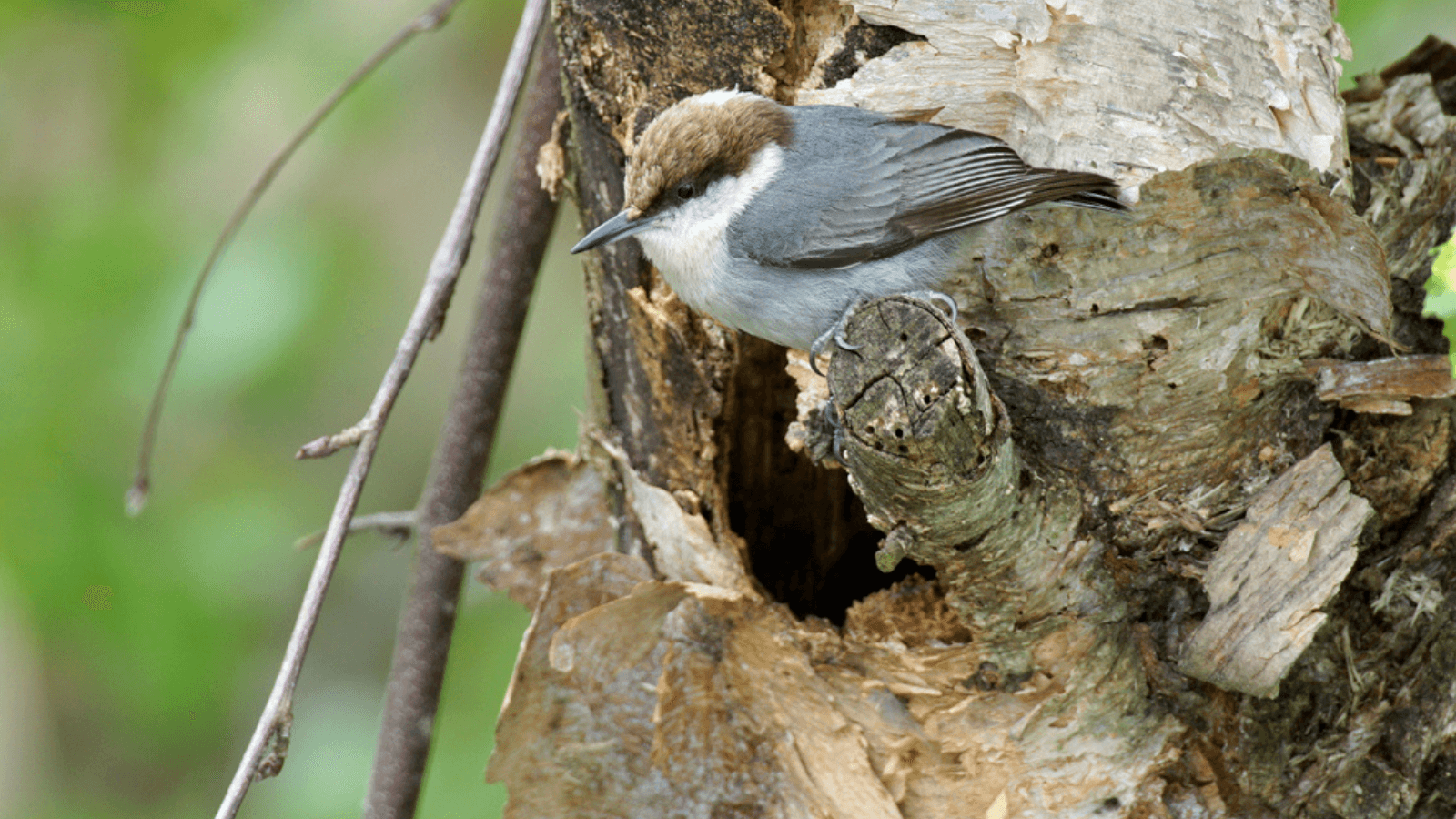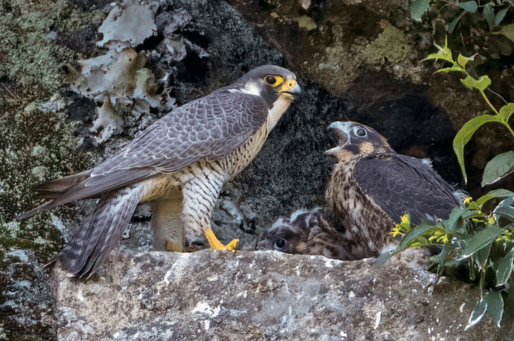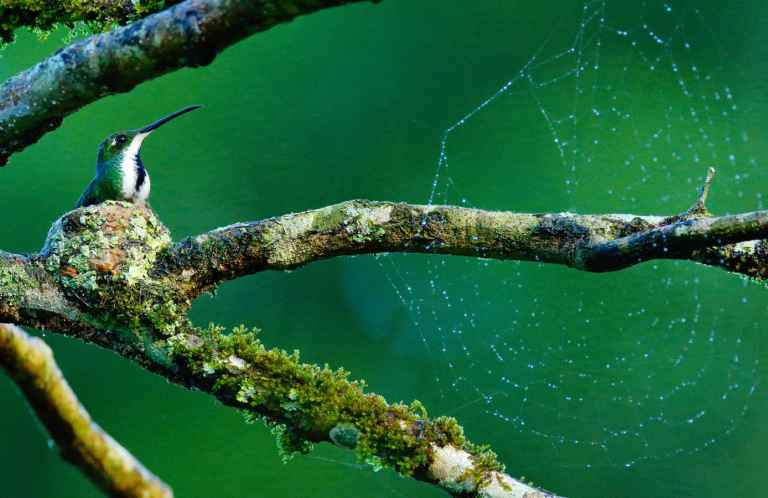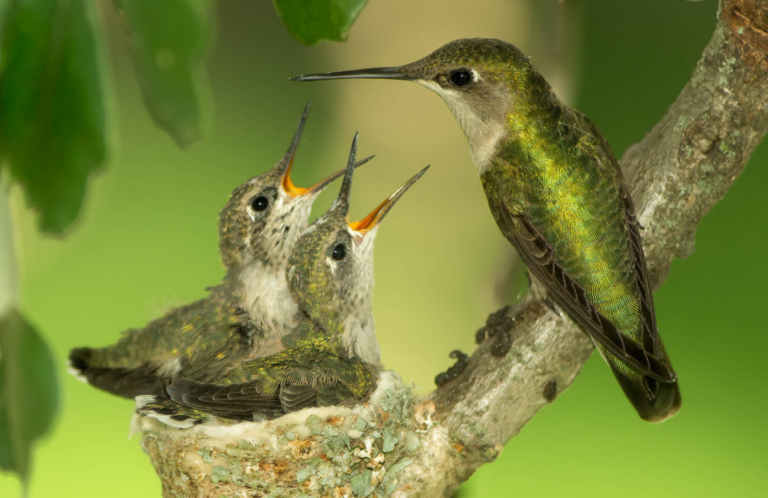A Look Inside the Nest: Male Birds and Parenting

As we observed with female birds, avian parenting styles can vary greatly. Some female birds, like hummingbirds, are solo parents from start to finish, building nests, brooding, and raising young on their own. Others have no involvement at all in raising their young and, like the Brown-headed Cowbird, use brood parasitism to shift that responsibility onto not just another bird, but a bird from another species.
Male bird parents run the gamut, too, and sometimes defy expectations. In the bird world, some male parents contribute only genetics to the next generation, as is the case with male hummingbirds. Then, there are deeply devoted dads like the Wilson's Phalarope, doing all the heavy lifting to help chicks thrive. No matter how it gets done, nesting and raising chicks is not for the faint of heart, and many birds do it after enduring long migrations. Learn how three male birds handle the task of bringing up young.
Peregrine Falcons: Fierce Protectors
Over the last decade, nest cameras have given us a front-row seat to watch nesting dynamics play out in real-time among Great Horned Owls, Bald Eagles, Red-tailed Hawks, and many other raptors. These cameras have also provided a rare chance to carefully observe the world's fastest animal: the Peregrine Falcon.
Male Peregrine Falcons may not put a lot of effort into the nests they sometimes make for their mates — they create a scrape, a simple depression in dirt or gravel by lying on their bellies and kicking dirt out — but they are certainly attentive when it matters most. Peregrine parents split their nesting duties, with the female incubating the eggs about 66 percent of the time. Like their female counterparts, male Peregrines possess a brood patch, a featherless area on their underside that allows for skin-to-egg contact and the transfer of warmth from the parent to the egg. When he's not at the nest, he is out on the wing, on the hunt for prey, and making frequent returns to provide his mate with a steady supply of food.

He steps it up once the chicks have hatched, supplying the majority of the food for the hatchlings in the first half of the nestling period. Both parents encourage juvenile Peregrines to take their first steps from the safety of the nest scrape, eventually coaxing them over the edge for their first flights.
Peregrine Falcons were once alarmingly absent from the skies. Like Bald Eagles, Peregrines suffered the failure of nests throughout the 1950s and 1960s. The pesticide known as DDT was to blame for the precipitous drop in Peregrine numbers. The chemical weakened and thinned the shells of the birds' eggs, causing them to crack during brooding. Peregrine Falcons are apex predators, absorbing DDT that made its way up the food chain from insects to the falcons' prey. The results were devastating. Only 324 pairs remained in the U.S. by 1975.
The tides began to turn for Peregrines with the passage of the Endangered Species Act. Slowly, Peregrine Falcon populations rebounded. Though they naturally nest on tall cliffs, part of the Peregrine Falcon's triumphant return has seen them staking out the edifices of soaring skyscrapers and the trusses and beams of bridges to make their nests.
The plight of these fierce protectors reminds us of the dangers of using harsh chemicals and the ripple effects pesticides can have. Though DDT has been banned for decades, other pesticides that harm birds are on the market, and they can have devastating effects on raptors. Learn more about natural options for managing pests and take action to strengthen pesticide regulations.
Red-necked Phalaropes: Do-It-Yourself Dads
Phalaropes, like the dainty Red-necked Phalarope, throw out many of the “rules” we have been taught about birds. These long-legged dabbling shorebirds do not behave like shorebirds: they swim in deep waters, and have a characteristic spinning swimming style that creates tiny whirlpools, forcing small invertebrates to come closer to the water's surface. The female phalarope is the one with the showy breeding plumage. During the breeding season, the female Red-necked Phalarope transforms from gray, white, and black and takes on a beautiful rusty color that runs the length of her long, graceful neck. The male, though slightly smaller, is no less beautiful, but his coloring is duller overall.
The female phalarope has another surprise: she is the one who does the courting, sometimes seeking out multiple mates per season and fending off other females. Though some females will stay near the nest, usually once she's selected a nesting spot and laid her eggs, she's gone.
Then it's time for the male to take over. He sets about putting things in order, arranging nearby vegetation to create a kind of canopy over the spot the female has chosen, often on mossy hummocks close to a lake or another pool of standing water. He might as well make it cozy: he has a solid three weeks of incubation ahead of him.
Fortunately, caring for newly hatched phalaropes is not nearly as time-intensive as caring for young Peregrine Falcons. Phalarope chicks are precocial, emerging from their shells with their eyes open and able to feed themselves just after hatching. Even when the female stays within the area, the male is solely responsible for looking after the little ones. When danger approaches, males crouch low over chicks, covering them with one wing. He may confront a potential predator, distracting any encroaching foxes, weasels, or gulls and keeping them well away from the nest.
The Red-necked Phalarope is pelagic (out on the open ocean) during the non-breeding season, but during migration relies on a variety of inland watery habitats, including saline lakes like Utah's Great Salt Lake. Here, thousands of phalaropes and other shorebirds gather to molt and replenish their fat stores, doubling their body weight before continuing their journeys. Food sources are abundant in these salty lake habitats — sometimes a little too abundant for some phalaropes. (Occasionally, Wilson's Phalaropes will feed on brine shrimp and brine flies to the point that they struggle to take flight.) But that abundance is in jeopardy.
Though Red-necked Phalarope populations are difficult to pin down due to their pelagic nature, their numbers have dropped significantly at some long-standing migration staging sites. In the Arctic, where they breed, climate change is melting the permafrost. During migration, changes to saline lake environments could have an impact on the species. The Great Salt Lake is important stopover habitat for Red-necked Phalaropes, Wilson's Phalaropes, Eared Grebes, Marbled Godwits, and other species, but it has reached dangerously low levels as diversions upstream have siphoned off water for industry, agriculture, and residential areas. A lawsuit filed in 2023 by community and conservation groups, including ABC, alleged the state of Utah had failed to take action to prevent ecological collapse in this vital wetland habitat.
Brown-headed Nuthatch: Bringing All the Boys (Back) to the Nest
For the Brown-headed Nuthatch, raising young takes a village. Found in the pine forests of the southeastern U.S., these tiny, industrious nuthatches zigzag through trees, sticking close to the tops of trees. They can be hard to spot, but their cheerful, squeaky-toy sound is unmistakable. The Brown-headed Nuthatch is an outlier among most North American bird species: it uses tools, using chips of bark to dislodge bark from trees while foraging. It is also one of the continent's only cooperative breeders.
When it comes time to nest, male Brown-headed Nuthatches select an optimal nesting site, most often a hole in a rotting branch or snag (a dead tree left standing), an old woodpecker hole, or sometimes even a nest box. Together, the male and female, who have a strong pair bond that typically lasts years, prepare the nest, adding bark shreds and wood chips along with softer materials like grass, feathers, and Spanish moss.
Once the female is on the nest incubating a clutch of as many as seven eggs, the male is on duty. He keeps his mate well-fed, bringing a steady supply of spiders, cockroaches, and beetles back to the nest. He may also call for her to come off the nest for a time, a method for regulating the incubation of the eggs.
Once the chicks hatch, the male has more beaks to feed, but he often has some help: offspring from previous breeding seasons. These helpers, mostly males, may hang around from the start of the breeding season, assisting with the construction of the nest and supplementing the food the male parent brings back to the nest. When the nest needs to be defended, count on the young helper nuthatches to swoop in. The young males also are the nest's cleaning crew, removing debris and keeping the nest sanitary and safe for young hatchlings. Tending to a nest gives the young, inexperienced males skills that will be useful when they are ready to build nests of their own.
The biggest threat to the Brown-headed Nuthatch is the loss of mature pine forests and the snags needed for nesting. While the species is stable and not facing immediate conservation concerns, it has been extirpated from some habitats where it was once common. Reintroduction efforts have re-established a population of Brown-headed Nuthatches in Florida's Everglades National Park. After a century of their absence, in 2020, Brown-headed Nuthatches returned to Mark Twain National Forest in Missouri to land restored by ABC and its partners. No matter where you live, keeping your yard bird-friendly can be beneficial for species like the Brown-headed Nuthatch. Let your yard go a little wild: leaving dead trees standing can create nesting habitat, and native plants will attract the insects birds need to feed young ones.
Taking Pride in Fatherhood
A few years ago at a zoo in Berlin, two male King Penguins, Skipper and Ping, joined the ranks of other same-sex penguin pairs venturing into parenthood when they adopted an egg of their very own. After attempts at brooding rocks and fish, they were given an egg that had been abandoned by a female. Though the egg ultimately did not hatch, Skipper and Ping incubated like seasoned penguin parents. Some same-sex penguin couples have successfully hatched and raised chicks in captivity. They have proven to be excellent adoptive parents! This arrangement might work so well because the roles of male and female penguins of this species in incubating and raising young are fairly evenly distributed: they split incubation duty and both parents play an active role in rearing little ones.
Murphy the Bald Eagle stole hearts when he was documented earnestly incubating a rock in his habitat at a wildlife sanctuary. He arrived at the sanctuary with an injury that prevented his release back into the wild. Over the years, Murphy diligently built and fiercely defended nests that contained not eggs, but a rock. He carefully turned his rock in the nest, incubating it like it was a real egg. Though it (obviously) never hatched, he kept trying. He displayed such a strong aptitude for parenting that, when an eaglet fell from a nest and needed care, his caregivers thought he could be a great candidate for surrogate fatherhood. Their instincts were correct: Murphy took to the chick almost immediately, responding to its peeps, sharing food, and protecting it.
A Final Word on Feathered Fatherhood
These different parenting approaches, and even the condition of chicks when they hatch, are strategies that have evolved over hundreds of thousands of years to give each species the best chance at survival. How it happens might look different from species to species, but the end goal of parenthood for birds is always another generation of healthy youngsters.
However it gets done, raising chicks is hard work, and birds can always use our help. Parents need safe, resource-rich places to nest. Migrating birds, especially first-timers, need migratory paths clear of the dangers of deadly glass windows. We can all make the way easier for birds as they journey from the safety of the nest to the skies. Learn how you can live a bird-friendly life all year round, but especially in the summer as chicks hatch and young, inexperienced birds begin to explore the world around them (which might just be your backyard!).
If you've found a young bird outside the nest, follow these steps to determine the best course of action.



















































